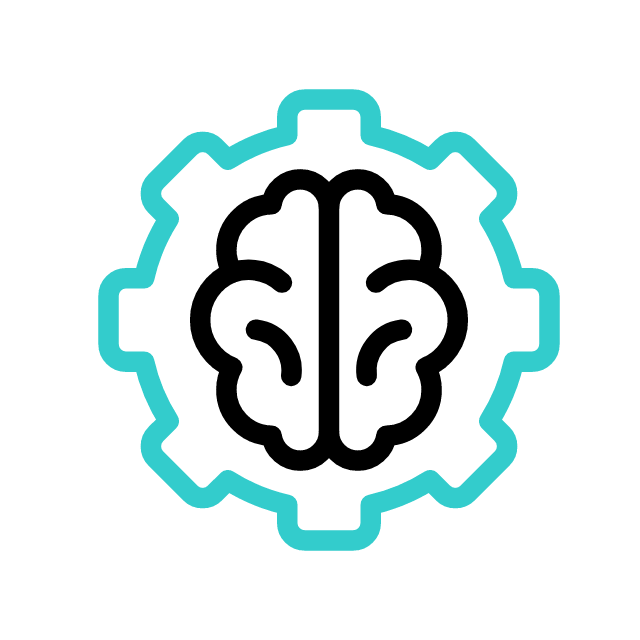What issue can we solve for you?
Type in your prompt above or try one of these suggestions
Suggested Prompt


Introducing the Gap Z
When it comes to creating experiences that Gen Z customers will love, there’s a disconnect between what banks are providing and what Gen Z customers want to see.
In a recent report, we titled this Gap Z. Gen Z constitutes nearly 70 million people in the U.S. who were born between 1997 and 2012—and they are reshaping the banking landscape. But it won’t be easy to win over the hearts and minds of a generation that craves personalization, immediacy and sustainability within each digital transaction.
Gen Z, with approximately $360 billion in disposable income, represents a formidable force in the evolving financial landscape. Known for their digital fluency and strong social values, they're more than willing to support social initiatives and public-private partnerships that align with their convictions.
The launch of blockchain technology in digital finance
The advent of blockchain technology and the surge of cryptocurrencies have created significant noise in the financial services ecosystem. More specifically, the underlying technology behind cryptocurrency—blockchain—has caught the attention of financial services organizations who are looking for ways to make it work for them and their customers.
Blockchain allows the creation of tokens, a digital asset that can be used as a means of payment, a unit of account or a store of value. While these concepts may sound complex, they've already found adoption among the younger generations, particularly Gen Z.
With blockchain technology, there is potential to create fully transparent platforms independent of any single entity controlling it. Here, a Gen Z investor can fund, invest in and even profit from social causes and partnerships they believe in. This introduces the potential for unique digital products using tokens, which can be traded as liquid assets if needed. Think of this like a GoFundMe but with added trust, transparency and scalability in the platform for large-scale initiatives, plus the added ability to create new asset classes and liquidity.
Deconstructing blockchain and token economics
In a blockchain system, tokens are created through a process called minting. Tokens can represent anything from a real-world asset (like real estate or gold) to digital services (like storage space or processing power).
There are several types of tokens, but the two most common types are utility and security tokens. Utility tokens provide holders with access to a product or service, while security tokens represent investment contracts and typically provide dividends or voting rights. Token economies play a vital role in the new financial landscape as they can decentralize finance, enabling peer-to-peer transactions and enhancing accessibility.
In the past, several companies have tried to use—and misuse—tokens for everything from raising money for what was called Initial Coin Offerings (ICO), to starting a new blockchain or new cryptocurrency. The use of tokens on blockchain has the potential to be more trustworthy and noble while helping Gen Z fulfill their desire to participate in social issues.
Tokens as a tool for new financial product creation
Tokens have been used in the past to create unique financial products. Technically, it is possible to tokenize any type of asset class, such as real estate, equity, music, art or collectibles.
Tokens can spur innovation in financial products by allowing fractional ownership, creating new investment vehicles and providing access to people who might not have current banking relationships. For example, tokenized real estate can allow more people to invest in property markets by purchasing small portions or “tokens” of a property. This effectively democratizes real estate investment, which was previously only accessible to affluent individuals or corporations.
Some firms are already looking to take advantage of tokens as new tools and extend products to support a sustainable world. In one example, BlackRock recently filed for approval from the SEC to launch a Bitcoin ETF (Exchange Traded Funds) that would track Bitcoin's underlying market price. Proponents say an ETF would give investors exposure to Bitcoin without directly buying it.
Understanding Gen Z and digital finance
Gen Z's unique traits make them an enticing audience for financial product innovation. They're digital natives who are comfortable navigating online financial transactions and are the most familiar with digital currencies, making them open to innovative financial products like token economies.
Publicis Sapient recently launched a resource focused on Gen Z and banking titled STEEZ that highlights three key ways that Gen Z looks at financial decisions: Heart, Brain and Hands .
-

Heart
Gen Z pays special attention to social causes such as diversity, inclusion and climate change and makes sure progress in these areas is visible, transparent and sustained. They are willing to put their dollars behind the causes they support and believe in.
-

Brain
Gen Zers are self-learners and digital natives. They look at digital channels and services that provide access to financial literacy tools while building trust.
-

Hands
Gen Z loves a hands-on approach; being able to find and access information from their preferred financial institutions on social media apps makes all the difference.
Taking action: How Gen Z can make an impact with tokenization
In essence, token-based funding is a decentralized, transparent and scalable version of crowdfunding, or rather, a scalable version of GoFundMe. Tokens can be issued to raise funds for social initiatives, allowing Gen Z to directly financially support causes they care about. The Ethereum blockchain, for example, has hosted various token sale campaigns to fund development projects.
Token-based funding can stimulate community engagement as holders may have a say in the initiative's direction. It can also create a sense of ownership and responsibility towards the success of the cause, further driving participation.
Fidelity Investments recently announced the launch of a new Environmental, Social and Governance (ESG) fund—Fidelity Healthy Future Fund (FAPHX) that invests in companies around the world whose products, services and/or technology are believed to either extend or improve life expectancy, enhance health and wellness in people’s lives or mitigate negative environmental impacts affecting health and wellness. or improve life expectancy, enhance health and wellness in people’s lives or mitigate negative environmental impacts affecting health and wellness.
This new mutual fund expands Fidelity’s lineup of thematic sustainable funds, which includes equity, fixed income, high income and asset allocation strategies, that help customers connect their financial goals to positive themes in the broader world.
Facilitating Public-Private Partnerships (PPP) with tokens
Tokens could also incentivize public-private partnerships. For instance, a local government could issue tokens to fund a public infrastructure project. Private investors, including Gen Z, could purchase these tokens, effectively sharing the cost and risk of the project. In return, investors could receive a portion of the project's future revenues, creating a win-win situation for both parties.
A recent paper examined how, from an investor perspective, “tokenization enables fractional investment, promoting inclusiveness by offering financial access to individuals, small- and medium-sized enterprises and the unbanked.” (Financing Public-Private Partnership Infrastructure Projects through Tokenization-enabled Project Finance on Blockchain, Y Tian, 2022)
Moreover, tokens' transparency and traceability can increase trust in these partnerships, as all transactions are visible and immutable on the blockchain. An exchange can also add the potential of making this token liquid, so investors have the opportunity to trade and profit from causes they believe in.
Challenges and risks in implementing token-based financial products
While token-based financial products offer promising opportunities, they also come with regulatory challenges as the legality of tokens varies widely across jurisdictions. Financial institutions must navigate complex and evolving regulatory landscapes to ensure compliance. Additionally, the rush to capitalize on past tokenization efforts, like NFTs, may have caused some distrust for Gen Z consumers.
On the technological front, security risks such as hacking and fraud are significant concerns. Implementing robust security measures and educating users about safe practices can help mitigate these risks.
The future of token-based financial products
There is an opportunity for financial institutions (FIs) to close the Gap Z. Banks cannot afford to ignore the potential of token-based financial products and the allure of platforms and products for a socially conscious generation. By looking at a framework to build token-based products and make them available on public platforms, FIs can tap into the large Gen Z market, creating products that align with their social values and digital nativity.
As token-based financial products gain popularity, they can drive financial inclusion, facilitate social initiatives and foster public-private partnerships. However, to ensure the success and resilience of these products, it's crucial to tackle the regulatory and security challenges head-on while educating users about the risks and rewards of this new financial frontier.
Related Articles
-
![]()
Insight
Are You Gen Z Ready?
They know what they want, and they’ll only do business with organizations that deliver it. So how do businesses rise to the Gen Z challenge?
-
![]()
Solution
How the Digital Home Equity Line of Credit Process Works
Digitization and blockchain can enable greater transparency, easier servicing and distribution and better recordkeeping during the HELOC process.
-
![]()
Solution
A New Era of ESG for Financial Services
Make the right sustainable decisions with transparent, reliable and consistent ESG ratings.









